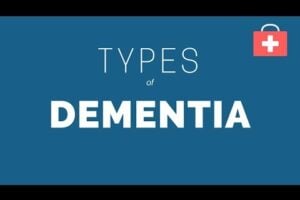TRANSCRIPT: Below is an approximation of this video’s audio content. To see any graphs, charts, graphics, images, and quotes to which Dr. Greger may be referring, watch the video below.
The problem with publishing research on chocolate is that the press jumps on it, oversimplifying and sensationalizing the message. Then, the money starts rolling in from candy companies, muddying the message. But, lost in all that is an important idea—that the flavanol phytonutrients in cocoa do appear to be beneficial. (Continued below video…)
The sugar in chocolate isn’t good for us; the fat and excess calories in chocolate aren’t good for us; but, “natural cocoa powder can be [considered] a health food.” So, adding cocoa to a smoothie, or oatmeal, or whatever, would be health-promoting. But, ideally, choose unprocessed, un-Dutched cocoa, since the flavanols are what give cocoa its bitterness. So, they try to process cocoa with alkali to destroy them, on purpose. Thus, when it comes to cocoa, “bitter [appears to be] better.”
In my video on chocolate and artery function, I showed how dark chocolate could improve the function of coronary arteries in the heart within two hours of consumption, using fancy angiography. But, there are some blood vessels you can visualize with your eyes—the blood vessels in your eyes. Two hours after eating dark chocolate; significant improvement in the ability of the little veins in your eyes to dilate.
What about the blood vessels in your legs? Peripheral artery disease—atherosclerosis in the arteries feeding your limbs, leading to claudication, a crampy pain in your calf muscles when you try to exercise, due to impaired blood flow. So, maximal walking distance and maximal walking time were studied in 20 peripheral artery disease patients, two hours after eating dark chocolate, with a respectable 85+% cocoa, or after eating wimpy milk chocolate. After the dark chocolate, they could walk about a dozen more yards, and about 17 more seconds, than before the dark chocolate.
But, after the milk chocolate they weren’t even able to walk as far as baseline, and not a single second more. So, there does seem to be something in cocoa that’s helping, but a few seconds here or there aren’t going to cut it.
How about reversing the atherosclerosis—which we didn’t even think possible, until 1977? Wait—what happened in ’77? Dean Ornish didn’t start publishing on heart disease reversal until 1979. Well, actually, the first demonstration of atherosclerosis reversal with a cholesterol-lowering diet and drugs wasn’t on the coronary arteries going to the heart, but rather the femoral arteries, going to the legs.
What about the arteries going to the brain? Well, there’s a noninvasive way to measure arterial function within the brain, using transcranial ultrasound. If you ask someone to hold their breath, the brain says uh-oh, and starts opening up the arteries to increase blood flow to compensate. But, if the arteries in our brain are stiffened and crippled by atherosclerosis, they’re unable to open as much and as fast as they should—and so, are said to have a smaller “breath holding index,” which can be a risk factor for stroke. So, researchers designed an experiment in which they compared the results of a target food to something neutral, like oatmeal. So, did they choose like a spoonful of cocoa powder, or something? No. A randomized crossover trial of oatmeal, versus a “deep-fried Mars bar.”
Wait, why a deep-fried Mars bar? Well, this was published in the Scottish Medical Journal, and, evidently, deep-fried Mars bars are “a snack…strongly [associated] with Scotland.” Wait, is this just an urban legend, or something? No. “627 fish and chip shops in Scotland [were called] to ascertain the delicacy’s availability,” and more than one in five said yeah, we’re selling up to 200 a week. Just follow the signs. Comes out a little something like this. Batter-dipped and deep-dried Snickers bars and pizza were, evidently, less popular. The researchers conclude that it’s “not just an urban [legend]. Encouragingly, [they] did find some evidence of the penetrance of the Mediterranean diet…albeit in the form of deep-fried pizza.”
Could this be contributing to Scotland having among the highest stroke rate in Europe? Well, they put it to the test, and, interestingly, there was a significant drop in men, compared to women. Maybe men are from Mars, women are from Snickers?
Regardless, what about chocolate that’s not deep-fried? There’s been a few population studies that have followed people over time, and found that those who ate chocolate appeared to have lower stroke rates—since confirmed by another study.
But, maybe chocolate consumption just happens to be related to other behaviors that are heart- and brain-healthy? Like hey, people that exercise a lot have to eat more food, period. So, maybe they eat more chocolate? They didn’t see any evidence of that, but you can’t account for everything. To prove cause and effect, you’d have to like randomize people into two groups, and make half eat chocolate, and the other half not, and follow them out for a decade or two—to which one researcher replied, fat chance; you try to get people into a study where they could be randomized to 16 years without chocolate.











